Published September 23, 2019
Things weren’t going so well from where Joseph Pica sat. A few weeks before the new NOAA Ship Okeanos Explorer was set to depart Hawaii for its first official mission in Indonesian waters, some of the new remotely operated vehicles (ROVs) weren’t working as expected. Even though the ship had already completed field trials and shakedown cruises in the past year, new electronic gear had to be reconfigured to work with the Hercules and Argos ROVs, brought on through collaboration between the NOAA Office of Ocean Exploration and Research and Dr. Robert Ballard’s Institute for Exploration at the University of Rhode Island.
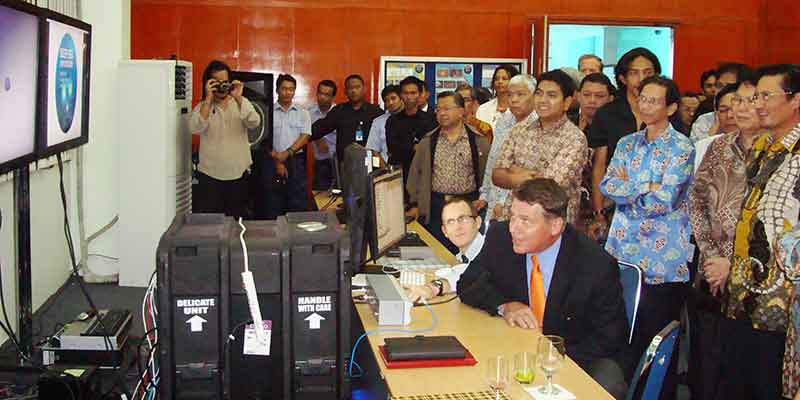
During a visit to the Jakarta Exploration Command Center, U.S. Ambassador Cameron Hume speaks to U.S. and Indonesian representatives onboard NOAA Ship Okeanos Explorer. Minister Fadel of Indonesia’s Ministry of Marine Affairs and Fisheries stands behind him. Image courtesy of NOAA Office of Ocean Exploration and Research.
Everything was taking longer than expected. For Pica, the ship’s first Commanding Officer (CO), these technological headaches were only one of many problems to solve. Pica was taking his first NOAA command, and it was at the helm of the Okeanos’ maiden voyage in the summer of 2010, known as the Joint Indonesia-U.S Expedition to Sangihe Talaud Waters, or “Index-SATAL 2010” for short.
“All those things were done in the last six months prior to us departing Hawaii for Guam and then Indonesia,” recalls Pica, now deputy director of NOAA’s National Centers for Environmental Information. “It was a pretty stressful time, from the shakedown to the first mission.”
There were other firsts for the mission as well. It was the first time U.S. marine scientists worked with colleagues in Indonesia, and the first time that live video data was transmitted from the Okeanos and Indonesia’s Baruna Jaya IV research vessel to research centers on shore.
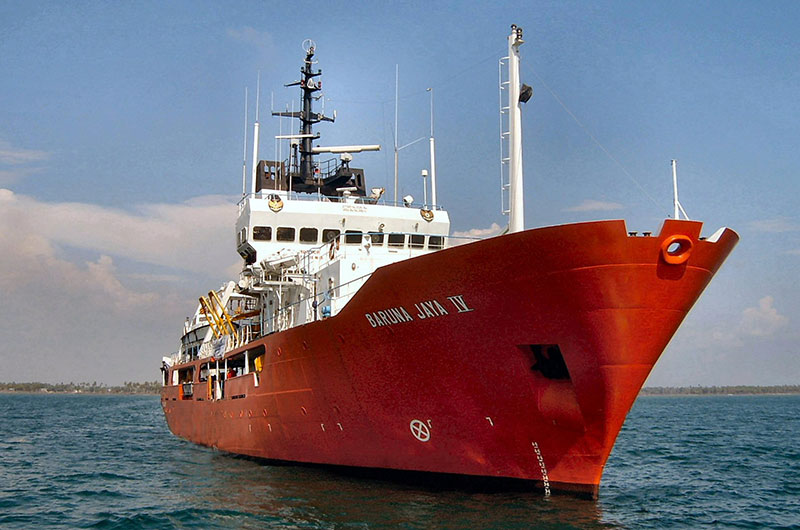
During the expedition, U.S. and Indonesian scientists worked side-by-side on two ships, the Okeanos Explorer and the Indonesian research vessel Baruna Jaya IV, and at Exploration Command Centers ashore. Image courtesy of NOAA Office of Ocean Exploration and Research.
As Pica worked on troubleshooting gear on the Okeanos in Honolulu, U.S. Ambassador Cameron Hume was wrangling last-minute challenges in Indonesia. Official government permits for the Okeanos were still pending in the capital of Jakarta. It took a few personal meetings as well as a last-minute visit to an Indonesian general recovering in a hospital to get the final approval.
“You never have enough signatures,” says Hume, a retired diplomat who is now a chairman of the NOAA Ocean Exploration Advisory Board “The ship was supposed to leave that night from Guam and they said they are not coming. We needed one more signature from an Indonesian admiral. He had a stroke and was recovering in the hospital. We know where he is, he can’t hide.”
Hume asked a local employee of the embassy to go the hospital with the Okeanos permit and a pen. The admiral signed the permit from his hospital bed. For Hume, it was a message about persistence in the face of bureaucratic adversity in a foreign land.
“If you want something to happen you have to decide you are never giving up,” he said. “We showed we could do it and be respectful.”
The efforts by Hume and Pica paid off. When the Okeanos sailed into the port of Bitung, Indonesia, it was greeted by a ceremony of traditional Indonesian dancers and musicians serenading the crew with flute-like bamboo instruments and a brass band. Hundreds of well-wishers showed up see the Okeanos while local media covered the event.
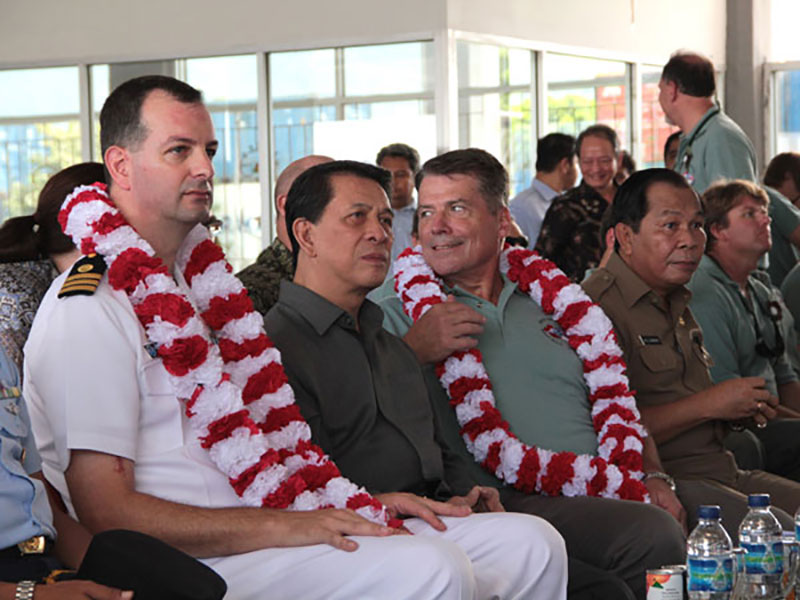
Commanding Officer Joe Pica, the Governor of North Sulawesi, US Ambassador to Indonesia Cameron Hume, and the Mayor of Bitung await the beginning of the Welcoming Ceremony in the Port of Bitung. Image courtesy of NOAA Okeanos Explorer Program, INDEX-SATAL 2010.
The crew of the Okeanos was especially excited about the special treat at the ceremony, a can of local beer under each seat, something deserved after weeks at sea.
David McKinnie remembers the sense of accomplishment he felt watching the Okeanos arrive on a misty morning of June 20, 2010. McKinnie was NOAA’s liaison to the U.S. embassy at the time and toiled for months with his Indonesian counterparts to prepare for that moment.
“The expedition revealed the power of science to build relationships among people and countries,” said McKinnie, now the engagement division lead for the NOAA Office of Ocean Exploration and Research.
Over the next few weeks, U.S. and Indonesian researchers explored previously unknown waters of the Great Coral Triangle off Sulawesi. The expedition bathymetrically mapped more than 39,000 square kilometers of the Sangihe-Talaud region, including several discrete volcanic cones on the western flank of the Sangihe Arc. The ROVs made 27 dives on 20 sites down to 3,650 meters (2.27 miles). The exploration included a first-ever trip to the only known hydrothermally active site in the Indonesian region, Kawio Barat, a volcanically active seamount hosting chemosynthetic ecosystems.
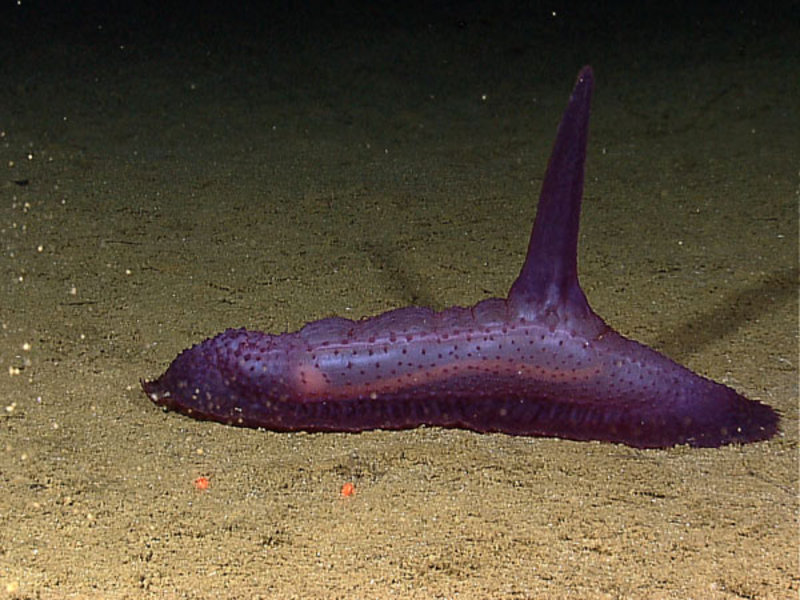
A purple sea cucumber with a high “spike” protruding from its dorsal section. Image courtesy of NOAA Okeanos Explorer Program, INDEX-SATAL 2010.
Video from these dives reveals the wealth of these remarkable undersea habitats. This was the first time that a live video feed was provided directly from an ROV to researchers on both the ships above as well as scientists on shore in Indonesia.
“This is one of the most biologically diverse area of the world in terms of corals,” McKinnie says. “What was not expected was the deepwater regions would be as diverse as the shallow regions. The expedition raised important questions about the kind of genetic connections there are between the shallow water and the deep water for biodiversity. That line of questioning has been followed up by other expeditions since then.”
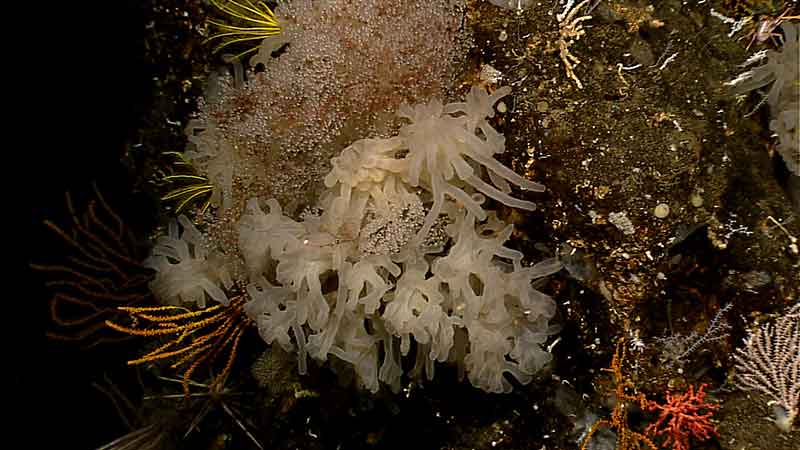
A dense community of life at “Site K.” It is possible new species were imaged at this site. Image courtesy of NOAA Okeanos Explorer Program, INDEX-SATAL 2010.
The crew and scientists on the INDEX-SATAL expedition say they always remember the lessons of persistence, scientific curiosity, and international cooperation they learned on the Okeanos trip to Indonesia.
“It was a good way to end,” remembers former CO Joseph Pica. “And I’m glad we’ve done 100 since.”